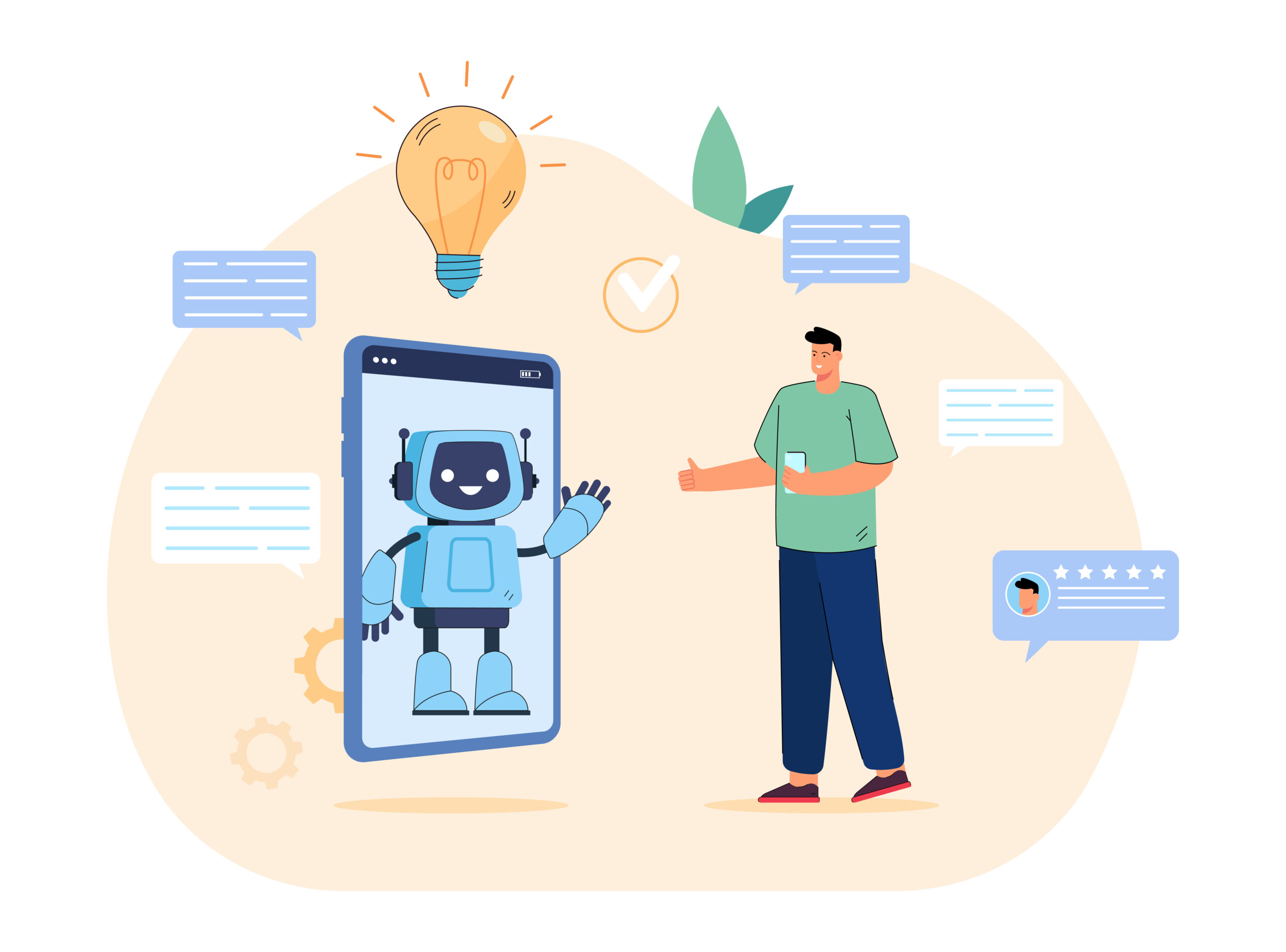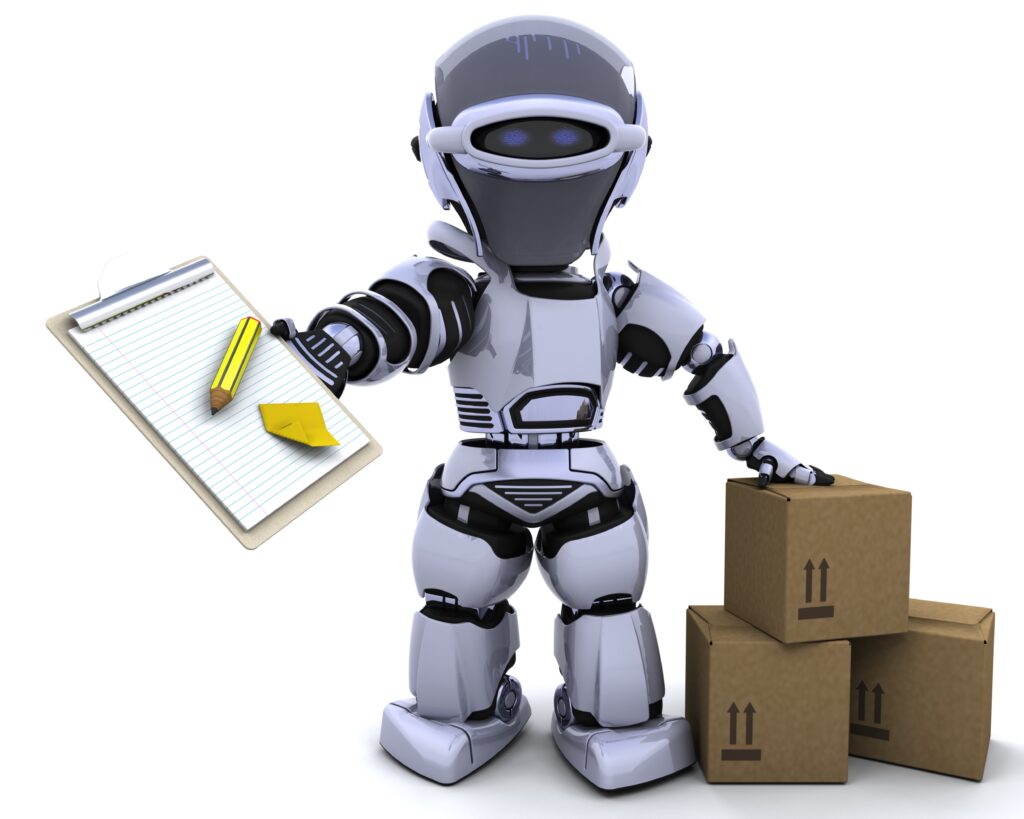
Key Takeaways
- eCommerce chatbots are friendly assistants that use clever technology to provide real-time support and engage customers in online stores.
- Benefits include enhanced customer service, personalized shopping experiences, upselling and cross-selling opportunities etc.
- Key features include automated responses, natural language processing, personalization, integration with multiple eCommerce channels, and analytics generation.
- Sephora, eBay, H&M, Domino's Pizza are the examples of effectiveness of chatbots in providing personalized experiences and streamlining the buying process.
Welcome to the world of eCommerce, where shopping is just a click away. But what if I told you there’s something even more exciting in store?
Meet eCommerce chatbots – your new shopping buddies! These smart virtual assistants are here to make your online shopping experience a breeze.
They understand your questions, provide instant help, and suggest personalized recommendations.
With their lightning-fast responses and friendly interactions, eCommerce chatbots are transforming our online shopping, making it more accessible, interactive, and enjoyable.
In this guide, we will explore the concept of eCommerce chatbots, their benefits, and features, leverage eCommerce chatbots for customer engagement, and provide e-commerce chatbot examples to get started.
- What do you mean by eCommerce chatbots?
- Benefits of eCommerce chatbots
- Key features & functionality of eCommerce chatbots
- Implementing eCommerce chatbots for customer service
- Leveraging eCommerce chatbots for customer engagement
- Best practices for eCommerce chatbot
- Examples of successful eCommerce chatbots
- Future trends in chatbots for eCommerce
What do you mean by eCommerce chatbots?

eCommerce chatbots are like friendly, helpful assistants that live in the online stores you shop at. They use clever technology to chat with you like a real person would.
These chatbots understand your questions and help you find products, give recommendations, and even process your purchases in the chat.
Imagine having a shopping buddy who knows exactly what you’re looking for and guides your shopping journey.
For instance, ASOS, a popular clothing retailer, has a chatbot that lets you explore its collection, suggest outfits, and buy items effortlessly by simply chatting with it.
eCommerce chatbots make shopping more fun, interactive, and convenient, ensuring a great experience while getting what you need.
Benefits of eCommerce chatbots
eCommerce chatbots offer a range of benefits that can significantly enhance the customer experience and drive business growth.
Let’s explore some of the key advantages:
1. Enhanced customer service and support
- Chatbots provide instant and round-the-clock customer support, ensuring customers can receive assistance anytime.
- They can simultaneously handle a high volume of inquiries, reducing customer wait times and improving overall satisfaction.
- With their ability to understand natural language, chatbots can accurately interpret customer queries and provide relevant responses, leading to faster problem resolution.
2. Personalized shopping experience
- eCommerce chatbots can analyze customer data and behavior to deliver personalized product recommendations based on individual preferences and purchase history.
- By understanding customer preferences and past interactions, chatbots can create tailored shopping experiences, making customers feel valued and understood.
- Personalized recommendations through chatbots contribute to higher conversion rates and increased customer loyalty.
3. Upselling and cross-selling opportunities
- Many eCommerce channels use chatbots to upsell and cross-sell products by offering relevant suggestions during customer interactions.
- Chatbots can intelligently recommend complementary items or upgrades by leveraging customer data and purchase history, increasing average order value.
- Chatbots act as proactive sales virtual assistants, assisting customers in exploring additional products and maximizing sales opportunities.
4. Improved efficiency and cost savings
- eCommerce chatbots automate routine tasks and inquiries, reducing the burden on human customer service representatives.
- They handle repetitive and straightforward queries, freeing human agents’ time to focus on more complex issues and providing higher- value support.
- Chatbots help businesses achieve cost savings by minimizing the need for additional customer service staff, especially during peak periods.
5. Seamless integration across multiple channels
- This enables consistent and unified customer experiences across multiple touchpoints, ensuring a seamless journey from discovery to purchase.
- Chatbots serve as a reliable and accessible point of contact, regardless of the platform or channel customers choose to engage with.
Key features & functionality of eCommerce chatbots

eCommerce chatbots offer many features and functionalities that empower businesses to deliver exceptional customer service and engagement.
Let’s delve into these key capabilities and explore a few additional ones:
1. Automated responses and real-time interactions
- eCommerce chatbots are equipped with automated response systems, allowing them to provide answers to customer queries and support requests instantly.
- An eCommerce chatbot can transform the shopping experience by offering personalized assistance and real-time support. By working with an AI chatbot development company, businesses can create smart, intuitive chatbots that handle customer inquiries, recommend products, and keep users engaged.
- They facilitate real-time interactions, enabling customers to receive immediate assistance, improving customer satisfaction, and reducing response times.
- Chatbots can simultaneously handle a high volume of inquiries, ensuring that customers get assistance quickly.
2. Natural language processing and understanding
- With advanced natural language processing (NLP) algorithms, chatbots can comprehend and interpret customer inquiries, even when phrased differently or using colloquial language.
- NLP enables chatbots to accurately understand the intent behind customer queries, ensuring relevant and meaningful responses.
- This functionality enhances the conversational aspect of the chatbot, making interactions more seamless and natural for customers.
3. Personalization and customer segmentation
- eCommerce chatbots leverage customer data and behavior analysis to provide personalized recommendations, promotions, and tailored responses.
- They can identify individual preferences and purchase histories, allowing customized product suggestions and personalized offers.
- By delivering personalized experiences, chatbots foster customer loyalty, increase engagement, and boost conversion rates.
4. Integration with multiple eCommerce channels
- This integration ensures a consistent customer experience across multiple touchpoints, allowing customers to engage with the chatbot regardless of their chosen platform.
5. Analytics and insights generation
- eCommerce chatbots provide valuable analytics and insights into customer behavior, preferences, and buying patterns.
- Businesses can leverage this data to understand customer needs, identify trends, and make data-driven decisions to optimize their marketing strategies and product offerings.
- These insights empower businesses to improve customer service, engagement, and eCommerce performance continuously.
Implementing eCommerce chatbots for customer service

Implementing chatbots for customer service in eCommerce involves several crucial steps that businesses should consider to ensure a successful deployment:
1. Understanding customer needs and pain points
- Conduct thorough research and analysis to gain insights into common customer pain points, frequently asked questions and typical issues faced during the shopping journey.
- Identifying these pain points will help businesses understand the areas where chatbots can provide valuable assistance and efficiently address customer concerns.
- By understanding customer needs, businesses can design chatbot conversation flows that align with customers’ expectations and deliver a personalized and helpful experience.
2. Designing chatbot conversation flows and scripts
- Map out customer journeys and interactions to identify key touchpoints where chatbots can assist.
- Create conversational flows that guide customers through various scenarios, ensuring a smooth and engaging experience.
- Develop clear and concise chatbot scripts that reflect the brand’s voice and tone while maintaining a conversational and friendly approach.
- Chatbot conversation flows, and scripts should be designed to handle a wide range of customer inquiries, from product information requests to order tracking and issue resolution.
3. Choosing the right chatbot platform or framework
- Selecting the appropriate chatbot platform or framework is crucial to ensure the chatbot meets the specific needs and requirements of the eCommerce business.
- Evaluate available options based on factors such as natural language processing capabilities, integration capabilities with eCommerce systems and databases, scalability, and ease of customization.
- Choose a platform that offers advanced features like sentiment analysis, context awareness, and machine learning capabilities, which can enhance the chatbot’s ability to understand and respond to customer queries accurately.
4. Integrating chatbots with existing customer service systems
- Seamless integration of chatbots with existing customer service systems is vital for delivering comprehensive and consistent support to customers.
- Integrate chatbots with ticketing platforms, knowledge base software, and customer relationship management (CRM) systems to access relevant customer information and provide personalized assistance.
- Ensure that chatbots can access real-time data and update customer records to facilitate a seamless handoff to human agents if necessary, without losing context.
- Integration with backend systems allows chatbots to access order information, inventory data, and customer profiles, enabling them to provide accurate and up-to-date information to customers.
5. Continuous monitoring, evaluation, and improvement
- Regularly monitor chatbot interactions, track key metrics, and gather customer feedback to evaluate the performance and effectiveness of the chatbot.
- Analyze chatbot conversations to identify areas for improvement, refine conversation flows, and update scripts based on customer interactions and feedback.
- Continuously train the chatbot using machine learning techniques to improve its understanding and responsiveness, ensuring it keeps up with changing customer needs and preferences.
6. Providing a seamless transition to human support
- Design a smooth transition process that allows customers to seamlessly escalate to human support when the chatbot reaches its limitations or when customers specifically request human assistance.
- Ensure that chatbot conversations are logged and can be easily transferred to human agents, enabling them to pick up the conversation from where the chatbot left off, avoiding the need for customers to repeat information.
Leveraging eCommerce chatbots for customer engagement

eCommerce chatbots present valuable opportunities for businesses to boost customer engagement and drive sales.
By implementing the following strategies, businesses can leverage chatbots effectively:
1. Upselling and cross-selling through chatbot recommendations
- Utilize the capabilities of chatbots to suggest relevant products or services to customers based on their preferences, browsing history, or previous purchase patterns.
- By offering personalized recommendations during conversations, chatbots can effectively upsell and cross-sell, increasing the average order value and driving additional sales.
- For example, if a customer is purchasing a laptop, the chatbot can recommend accessories such as a laptop bag or a wireless mouse.
2. Proactive customer outreach and personalized promotions
- Use chatbots as proactive engagement tools to initiate personalized conversations with customers, delivering exclusive discounts, promotions, or product recommendations tailored to their preferences and behaviors.
- Chatbots can analyze customer data and engagement history to identify opportunities for personalized offers, creating a sense of exclusivity and encouraging customers to make a purchase.
- For instance, a chatbot can reach out to a customer who has previously bought running shoes and offer them a discount on a new model that has just been released.
3. Collecting customer feedback and reviews via chatbots
- Implement chatbots as interactive platforms to collect valuable customer feedback, reviews, and ratings.
4. Providing self-service options and instant resolutions
- Chatbots can offer self-service options, guiding customers through common queries and enabling them to access information or perform tasks independently.
- They can provide step-by-step instructions on how to track orders, initiate returns, or access account information, empowering customers to find the information they need quickly and conveniently.
- Additionally, chatbots can resolve simple issues instantly by providing relevant information or troubleshooting tips, reducing customer effort and enhancing overall satisfaction.
5. Virtual shopping assistants and product recommendations
- By analyzing customer preferences and purchase history, chatbots can offer personalized product recommendations, helping customers discover new items that align with their interests.
- For example, a chatbot can suggest a new skincare product to a customer based on their previous purchases and skin type.
6. Social media integration and engagement
Best practices for eCommerce chatbot

Implementing chatbots for eCommerce customer service and engagement requires adherence to best practices to ensure optimal performance and customer satisfaction.
Consider the following guidelines:
1. Monitoring and optimizing chatbot performance
- Regularly analyze chatbot interactions, track key metrics, and gather customer feedback to assess the chatbot’s performance and identify areas for improvement.
- Use data-driven insights to optimize chatbot responses, conversation flows, and user experience, ensuring that the chatbot provides accurate and helpful information.
- Continuously update the chatbot’s knowledge base with new product details, pricing information, and frequently asked questions to keep responses relevant and up to date.
2. Maintaining a human fallback option for complex queries
- While chatbots can handle the majority of customer inquiries, there may be complex or sensitive issues that require human intervention.
- In such cases, businesses can hire a virtual assistant to provide real-time customer assistance and ensure a smooth user experience.
- Ensure there is a seamless transition to human support when chatbots are unable to address specific queries or when customers specifically request human assistance.
- Implement a well-defined escalation process that allows chatbot conversations to be seamlessly transferred to human agents, ensuring a smooth handover without customers having to repeat information.
3. Regularly updating chatbot responses and knowledge base
- Keep the chatbot’s responses and knowledge base updated on an ongoing basis to reflect the latest product information, company policies, and customer preferences.
- Review and update the chatbot’s scripts and conversation flows to address new customer inquiries or emerging trends in customer behavior.
- Ensure that the chatbot has access to real-time information, such as inventory levels and pricing, to provide accurate and reliable responses to customer queries.
4. Testing and refining chatbot interactions
- Conduct thorough testing and user feedback sessions to evaluate the chatbot’s usability, accuracy, and effectiveness in addressing customer inquiries.
- Continuously refine and optimize the chatbot’s conversation flows, responses, and user interface based on user feedback and testing results.
- Incorporate machine learning techniques to train the chatbot using real customer interactions, improving its understanding and responsiveness over time.
5. Providing clear and transparent communication
- Set clear expectations with customers regarding the capabilities and limitations of the chatbot.
- Clearly communicate when customers are interacting with a chatbot and offer options for reaching human support if needed.
- Use conversational language and maintain a friendly and professional tone to ensure a positive customer experience.
6. Seamless integration with eCommerce platforms
- Integrate chatbots seamlessly with eCommerce platforms, including websites, mobile apps, and messaging applications, to provide a consistent and frictionless customer experience across multiple touchpoints.
- Ensure that the chatbot can access relevant customer data, such as order history and preferences, to offer personalized recommendations and assistance.
Examples of successful eCommerce chatbots
Several eCommerce platforms have successfully implemented chatbots to enhance customer service and engagement.
These examples highlight the effectiveness of chatbots in providing personalized experiences and streamlining the buying process:
1. Sephora virtual artist

Sephora’s chatbot, known as the Virtual Artist, utilizes augmented reality technology to allow customers to virtually try on makeup products.
By leveraging computer vision algorithms, the chatbot accurately applies different shades of lipstick, eyeshadow, and other cosmetics onto a user’s selfie.
Customers can explore various product options, receive personalized beauty recommendations, and make informed purchase decisions, all within the chatbot interface.
The Sephora Virtual Artist offers an engaging and interactive shopping experience that goes beyond traditional browsing.
2. eBay ShopBot

eBay’s ShopBot chatbot serves as a virtual shopping assistant for customers.
It helps users search for products, provides personalized recommendations based on their preferences and browsing history, and delivers real-time auction updates.
The chatbot streamlines the buying process by assisting with bidding, providing payment options, and offering shipping information.
By integrating seamlessly with eBay’s platform, the ShopBot simplifies the overall shopping experience, making it more convenient and efficient for customers.
3. H&M’s Kik Chatbot

H&M’s chatbot on the Kik messenger platform engages customers in interactive and conversational experiences.
The chatbot offers fashion quizzes to help customers discover their personal style preferences and provides styling tips based on their responses.
Users can browse and purchase H&M products directly within the chatbot interface, eliminating the need to switch to a separate app or website.
With its focus on personalization and direct purchasing options, H&M’s Kik chatbot enhances customer engagement and delivers a unique shopping experience.
4. Domino’s Pizza

Domino’s Pizza implemented a chatbot that allows customers to place orders and track their deliveries through popular messaging platforms like Facebook Messenger and Slack.
Customers can interact with the chatbot using natural language, specifying their pizza preferences and adding additional toppings or sides.
The chatbot also provides real-time updates on order status and delivery time, ensuring a seamless and convenient experience for customers.
By integrating with messaging platforms, Domino’s Pizza’s chatbot simplifies the ordering process and improves customer satisfaction.
Future trends in chatbots for eCommerce

The future of chatbots in eCommerce is poised to bring about significant advancements and transformative experiences.
Here are some exciting trends on the horizon:
1. Advancements in artificial intelligence and machine Learning
As technology progresses, chatbots will continue to evolve with more advanced artificial intelligence (AI) and machine learning capabilities.
These advancements will enable chatbots to better understand customer preferences, anticipate their needs, and deliver highly personalized recommendations.
By analyzing vast amounts of data, including browsing history, purchase patterns, and customer feedback, chatbots will become even more adept at providing tailored and relevant suggestions to enhance the shopping experience.
2. Integration with voice-based assistants and smart devices
The integration of chatbots with voice-based assistants like Amazon Alexa or Google Assistant will enable customers to interact with chatbots through voice commands.
This integration will extend the convenience of chatbot interactions beyond traditional channels, allowing users to engage with chatbots using their smart devices, such as smartphones, smart speakers, or smart TVs.
Voice-based interactions will provide a hands-free and intuitive experience, further simplifying the customer journey and enabling seamless access to product information and support.
3. Enhanced chatbot analytics and predictive capabilities
The future of chatbots will see significant advancements in analytics capabilities.
Businesses will be able to leverage chatbot-generated data to gain deeper insights into customer behavior, preferences, and buying patterns.
Enhanced analytics will enable businesses to understand customer sentiment, identify emerging trends, and make data-driven decisions to improve their products, services, and marketing strategies.
Additionally, chatbots will employ predictive capabilities, leveraging machine learning algorithms to anticipate customer needs and provide proactive recommendations, ultimately enhancing the overall customer experience.
4. Multilingual and multichannel support
As businesses continue to expand globally, chatbots will evolve to provide multilingual support, breaking down language barriers and catering to a more diverse customer base.
Multilingual chatbots will be capable of understanding and responding to customer inquiries in various languages, ensuring effective communication and personalized experiences for customers around the world.
Furthermore, chatbots will offer seamless support across multiple channels, including websites, mobile apps, social media platforms, and messaging applications, providing consistent and accessible customer service across diverse touchpoints.
5. Conversational commerce and natural language processing
Chatbots will further advance in their conversational capabilities, employing sophisticated natural language processing (NLP) algorithms to understand and respond to customer inquiries in a more human-like manner.
They will be capable of engaging in complex conversations, understanding context, and providing contextually relevant information.
Conversational commerce, where customers can make purchases directly within chatbot conversations, will become more prevalent, allowing for a seamless and efficient buying experience.
Conclusion
As the eCommerce world continues to thrive, it’s time to embrace the power of chatbots for exceptional customer service and engagement.
These nifty virtual assistants are changing the game, bringing convenience and a personal touch to your shopping adventures.
From answering your queries quickly to guiding you toward the perfect purchase, eCommerce chatbots have your back.
They make shopping smoother and help businesses boost sales, build customer loyalty, and create unforgettable experiences.
So, get ready to dive into a future where chatbots shape the eCommerce landscape, delivering unparalleled service and making online shopping a whole lot more fun.
